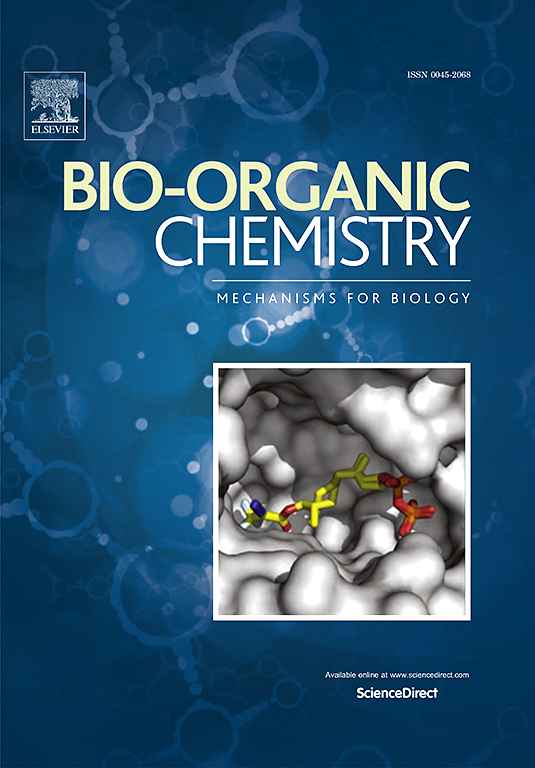Six isomers of diphenylheptane dimers from Zingiber officinale peel exert renal protection activities through anti-fibrosis and anti-inflammatory effects
IF 4.5
2区 医学
Q1 BIOCHEMISTRY & MOLECULAR BIOLOGY
引用次数: 0
Abstract
As the symbolic compounds in Zingiberaceae, most of diphenylheptane are exist in plants in the form of aglycones, and relatively rare dimers and glycosides of them have been found. A particular phytochemical investigation of Zingiber officinale peel led to the finding of six novel diphenylheptane dimers, including five aglycone isomers (1–5) and one new glycoside (6). Various spectroscopic and computational methods combined with acid hydrolysis were applied in their structurally elucidation. Biological evaluations of anti-inflammatory and anti-renal fibrosis activities of these compounds were carried out in vitro. Compounds 1–5 displayed effective anti-inflammatory activity in LPS induced RAW264.7 cells, especially that 2, 3 and 5 reduced the production of iNOS at a low concentration of 0.625 μM. Compound 3 could significantly inhibit the expression of fibronectin, collagen I and α-SMA in TGF-β1 induced NRK-52e cells at 5 μM. The stereoscopic configurations of the diphenylheptane isomers can markedly influence the biological activities, and compound 3 is a potential molecule for kidney protection via inhibiting inflammation.

求助全文
约1分钟内获得全文
求助全文
来源期刊

Bioorganic Chemistry
生物-生化与分子生物学
CiteScore
9.70
自引率
3.90%
发文量
679
审稿时长
31 days
期刊介绍:
Bioorganic Chemistry publishes research that addresses biological questions at the molecular level, using organic chemistry and principles of physical organic chemistry. The scope of the journal covers a range of topics at the organic chemistry-biology interface, including: enzyme catalysis, biotransformation and enzyme inhibition; nucleic acids chemistry; medicinal chemistry; natural product chemistry, natural product synthesis and natural product biosynthesis; antimicrobial agents; lipid and peptide chemistry; biophysical chemistry; biological probes; bio-orthogonal chemistry and biomimetic chemistry.
For manuscripts dealing with synthetic bioactive compounds, the Journal requires that the molecular target of the compounds described must be known, and must be demonstrated experimentally in the manuscript. For studies involving natural products, if the molecular target is unknown, some data beyond simple cell-based toxicity studies to provide insight into the mechanism of action is required. Studies supported by molecular docking are welcome, but must be supported by experimental data. The Journal does not consider manuscripts that are purely theoretical or computational in nature.
The Journal publishes regular articles, short communications and reviews. Reviews are normally invited by Editors or Editorial Board members. Authors of unsolicited reviews should first contact an Editor or Editorial Board member to determine whether the proposed article is within the scope of the Journal.
 求助内容:
求助内容: 应助结果提醒方式:
应助结果提醒方式:


